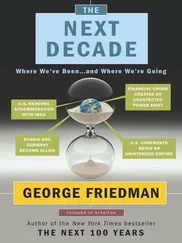What It Means for You: Guideposts to Health and Long Life
To sickness or to health? What can we make of all these findings about marriage, divorce, remarriage, and health and long life? First, if you are a single woman with a number of friends and an interesting life, don’t think you need to follow the misleading suggestion to get married (or remarried) to improve your health. Women, like Barbara, who had gotten divorced and not remarried usually lived long lives—on average they lived nearly as long as their steadily married counterparts. And contrary to all the popular advice, our research shows that being single can often be just as healthy for a woman as being in a marriage—particularly if she has been stably, consistently single and has other fulfilling social relationships such as close friendships, meaningful memberships in organizations, and family ties.
Married men do live longer but usually only if they are suited to a lasting marriage and do not divorce. Those who were prudent and responsible as children and those from stable homes were more likely to grow up to have a successful marriage. So here, too, seeing marriage as an element you need for long life is a gross oversimplification—it depends an awful lot on the particular man and the marriage.
Those well-adjusted people who have found a long-term compatible partner are likely to live significantly longer than their peers who are only sometimes attached, particularly if they are men. Those who find their relationships repeatedly dissolving, even into their forties and fifties, could face significant health risks. If that describes you, pay special attention to the information about careers and social organizations in the following chapters.
Happiness in couples is generally a sign of good health to come, but it is the man’s happiness that most especially predicts the couple’s later health. This was true for the Terman participants and the finding is being confirmed by modern physiological research.
We also wanted to look at the later effects of being widowed—was this more of a problem for the women or the men? We take up this matter in our analysis of masculinity, femininity, and long life. But first we needed to understand more about healthy careers.
CHAPTER 10
Careers, Success, and Satisfaction
Thriving and Surviving
Edward Dmytryk, the highly successful director of The Caine Mutiny (starring Humphrey Bogart, in 1954), had anything but an easy, unstressful life. He was the son of Ukrainian immigrants who had moved the family to San Francisco (and then Los Angeles) just in time for the young Edward to be noticed by his teacher and recommended to Terman for the newly launching study. A few years later, Edward left home as a teenager and struck out on his own to work as a low-paid messenger at Paramount Pictures. As he worked his way up in the film industry, Edward continued to face many remarkable challenges.
Mr. Dmytryk’s movie career stopped abruptly in 1947 when he was called before the House Un-American Activities Committee, which was investigating Communists and Communist sympathizers in Hollywood. Defending his freedom of thought and action, Dmytryk refused to testify and became one of the “Hollywood 10”—the directors and producers who were cited for contempt of Congress. 63 63 For an interesting article about Edward Dmytryk, see Richard English, “What Makes a Hollywood Communist?” Saturday Evening Post , May 19, 1951. For his New York Times obituary, see “Edward Dmytryk, Film Director, Dies at 90,” July 3, 1999. His 1978 autobiography is It’s a Hell of a Life but Not a Bad Living (New York Times Books).
He was sent to a federal prison camp, and his wife divorced him the following year.
In 1951 Dmytryk, who had been blacklisted and was unable to work in Hollywood, decided to change his stance and testify after all. He went back to the committee and confirmed that he and a number of other silent witnesses had indeed been previously involved with the Communist Party. For many years later, some in Hollywood scorned him as a sellout and informer. Others disdained him as a former Communist. Yet his career was spectacularly successful. In addition to The Caine Mutiny , he went on to direct such stars as Spencer Tracy, Deborah Kerr, Clark Gable, Elizabeth Taylor, Marlon Brando, and Richard Burton. One of the publicly identified of Dr. Terman’s subjects, Dmytryk lived almost the full twentieth century, dying at age ninety on July 1, 1999. How could someone facing such a stressful life and career live a long and healthy life?
Stress Is Not All It’s Cracked Up to Be
“Relax,” “avoid stress,” “don’t work too hard”—these are common exhortations for staying healthy—but turn out to be poor advice. Another dead-end myth. There is no evidence that people told to relax necessarily become healthier as a result. (We are not talking here of course about someone who is seriously ill and needs bed rest.) Could it be that if you give up an interesting, demanding job to retire and move away from your friends to live in a warm-weather golf community you may be increasing the risk to your health?
When scientists throw rats together in an overcrowded, competitive cage, the rats get sick. A problem with referring to the stresses of modern life as a “rat race” is that it makes us too willing to believe that what is bad for rats is bad for people. Interestingly, we rarely think the opposite—that what is good for rats is good for people. Few of us envy the life of a happy rat. The fundamentals of learning—rewards and punishments—are similar in rats and humans, but there are vast differences in overall brain function and social interactions.
In humans, there is little or no direct substantiation that the challenges of daily life on the job suppress the immune system and thereby cause significant numbers of people to die from cancer and other immune-related diseases. 64 64 For an overview of personality, immunity, and disease, see H. S. Friedman, “The Multiple Linkages of Personality and Disease,” Brain, Behavior, and Immunity 22 (2008): 668-75. Also see M. E. Kemeny, “Psychoneuroimmunology,” in Foundations of Health Psychology , ed. H. S. Friedman and R. C. Silver, 92-116 (New York: Oxford University Press, 2007).
Similarly, there is little or no evidence that people who are heavily involved in their jobs or work long hours are more prone to heart disease. It all depends on what kinds of stresses you face and on how you deal with them.
This does not mean that unbearable stress over long periods of time is not a problem. People such as combat veterans who have encountered more horror than they can cope with may very likely face post-traumatic stress disorder (PTSD). Those with PTSD suffer significant sleep disruptions (such as nightmares), chronic irritability, and problems expressing feelings, which lead to both internal disruptions and problems with families and other social relations. As we will see in chapter 14, in which we examine the Terman men who went to war, PTSD sufferers may also develop related unhealthy patterns—drinking heavily or abusing prescription or illegal drugs.
Some people face similar significant stress after years of workplace harassment. Clearly these things lead to significant health problems. But it is important to distinguish between severe, chronic stress reactions and the usual kinds of “stress” we find at work or school.
In 1940, when the popular and cheerful Paul was thirty-three years old, he reported his career triumphs and challenges to Dr. Terman. And he’d already had plenty of both. In college Paul had been active in journalism, working on the campus newspaper and writing short stories for a literary society. A real extrovert, he loved interviewing people and digging into their histories. Always the optimist, Paul had taken a low-level position at a local newspaper following graduation. He knew he wouldn’t have the best assignments right off, but he felt certain he would work his way to the top.
Читать дальше











